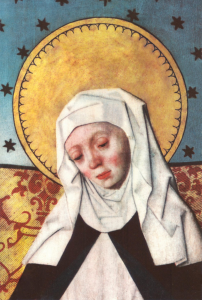Gregory the Great, Pope

Feast Day: September 3
Canonized: Pre-Congregation
Elected Pope: September 3, 590
Gregory (c. 540-604) was born into a prominent family. He studied law and by age 30 was mayor of Rome. He entered the Benedictine monastery, hoping to live a simple life and distributing his wealth to the poor and to monasteries.
That hope changed quickly. Gregory was sent to represent the pope in the court of the emperor of Constantinople. Gregory was sent back to Rome to become the pope’s secretary. When Pope Pelagius II died in 596, Gregory, who was at that time abbot of his monastery, was elected to take his place.
During his 14-year pontificate, Gregory served the faithful in many pastoral ways. His monastic background enabled him to improve the liturgy and church music. Gregorian chant is named in his honor. Many of the prayers recited in the Eucharist are attributed to Pope Gregory, for example, the Christmas Preface and the Preface of Easter and the Ascension. He is also credited with the placement of the “Our Father” in the Mass.
Gregory’s papal writings and teachings were extremely influential. They were based on his vision of pastoral care to meet the spiritual and physical needs of the people. Pope Gregory rebuilt ruined churches. His talents were spiritual and also tempered with day-to-day practicality, and he lived as simply as a monk. He updated clergy education and emphasized the urgency of preaching and living the Good News. During a time of famine throughout Europe, Pope Gregory organized the distribution of food to the starving and encouraged the rich to serve the poor. He called this work “the art of arts.”
Gregory was a genuinely pastoral pope. His profound concern for the poor shaped the direction of ministry for centuries. No single person in the history of the church other than St. Benedict did more to reverse the Dark Age than Gregory the Great. One small example of Gregory’s pastoral concern was his introduction of illustrated Bibles in order to make the word of God accessible to the illiterate.
Pope Gregory I combined pastoral leadership and prayer with personal holiness and social service. But his later years were troubled with poor health. He died on March 12, 604, and was buried in St. Peter’s Basilica with the epitaph “Consul of God.” He was canonized by acclamation at the time of his death. He is the patron saint of musicians and teachers. You will often see a dove in artwork of Gregory; it was said that when he dictated homilies to his assistant, a dove could be seen speaking from his mouth.
Connecting to Blest Are We® Parish and School
Grade 2, chapter 4
Grade 6, chapter 12
The Story of Our Church, unit 2




Comments are closed.